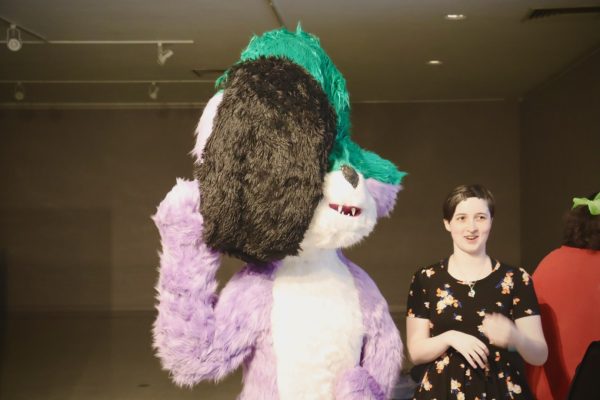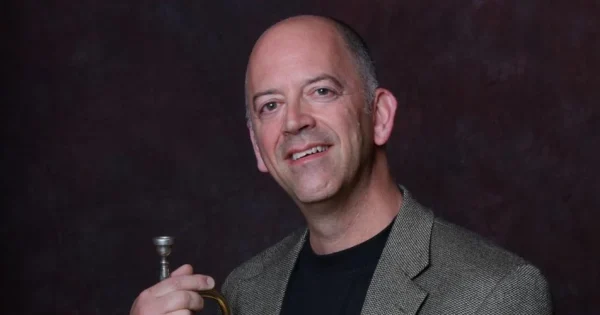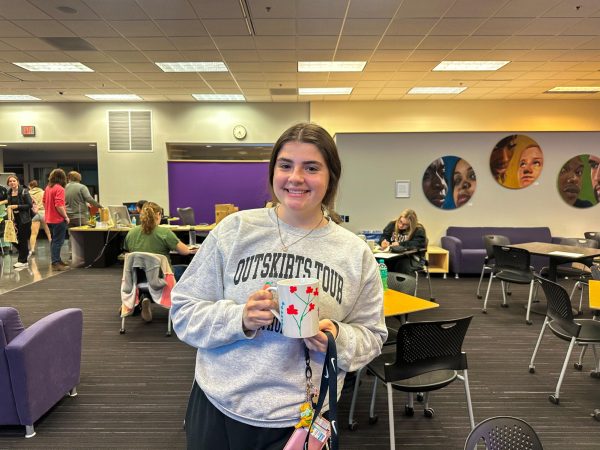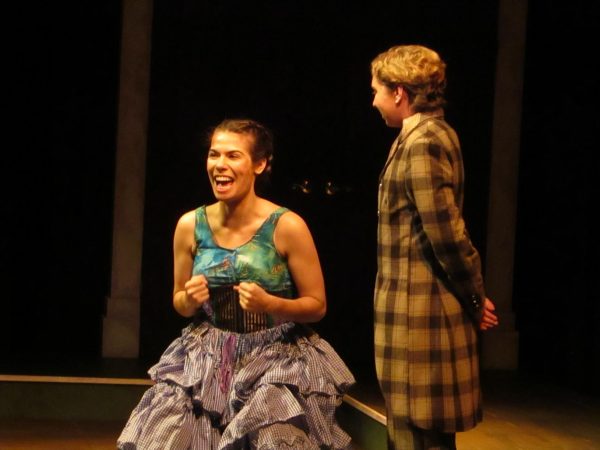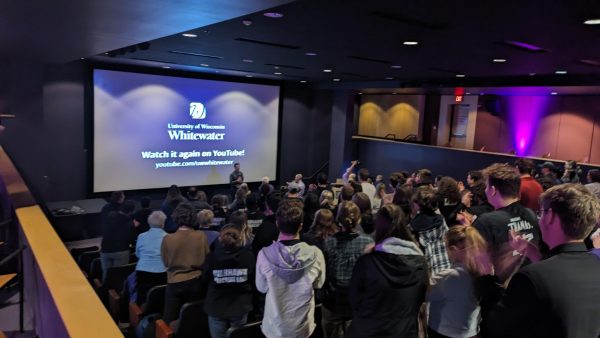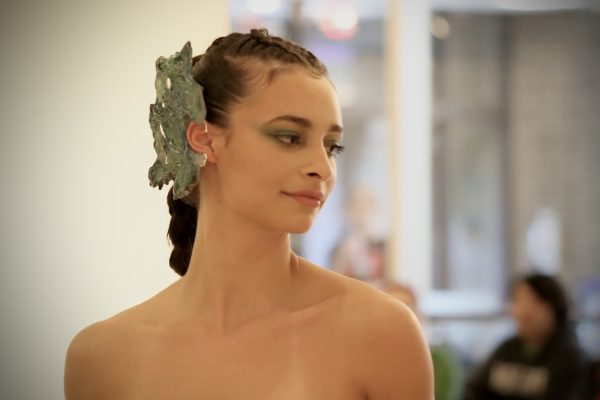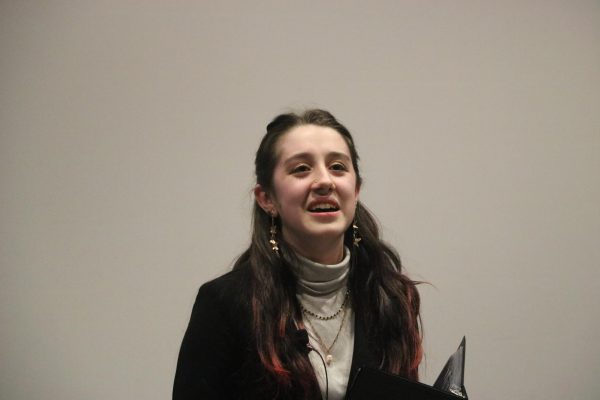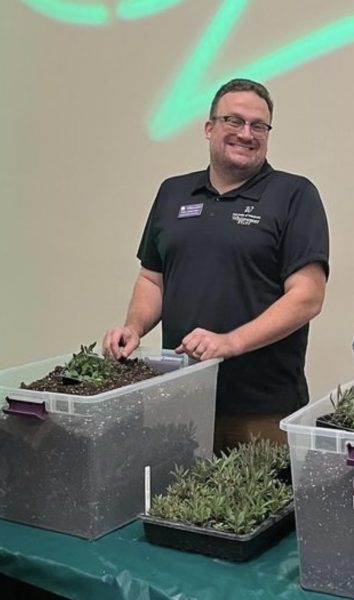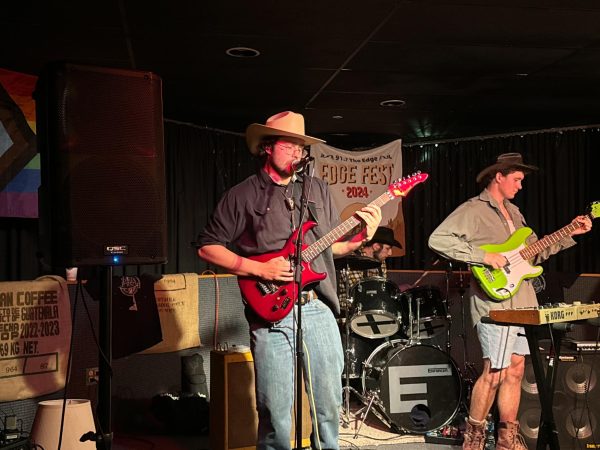Interactive art defines the contemporary style
May 2, 2017
While preparing for our anticipated field trip to the Museum of Contemporary Art in Chicago (MCA), I heard the current featured exhibit was based around a world renowned dancer and choreographer, Merce Cunningham. I became immediately disinterested and tuned out for a while in my art theory class.
I love visiting MCA, and I love looking at weird and sometimes repulsive stuff that doesn’t make sense to most people and deconstructing its theoretical concepts. When we talked about the Merce Cunningham exhibit, I wondered if MCA was desperately looking for a way to fill space.
Slow art month? Maybe.
But like my best dance move, the sprinkler combined with a little foot action, I was all wrong.
The exhibition, “Merce Cunningham: Common Time” is a retrospective that features the work he created in tandem with major contemporary artists of the time including Andy Warhol, Jasper Johns and Robert Rauschenberg. Cunningham also worked with composers, including his partner John Cage.
Walking into this exhibit was an immediate sensory surplus. Sculptural stagings of Cunningham’s sets inspired by boundary-bashing artists like Marcel Duchamp and others were juxtaposed to large video projections of Cunningham dancing and his company performing his choreography.
As I walked deeper, I found myself immersed in installations that made me feel as if I was on stage performing one of Cunningham’s pieces.
The installation dedicated to Cunningham’s “Rainforest” included Warhol’s installation “Silver Clouds,” which Cunningham used on set for this piece. The installation included a dozen or so silver, reflective Mylar pillows filled with helium that museum-goers were encouraged to pick up, poke and provoke.
As I found myself playing and punching the Mylar pillows, I thought about how the installation related to themes of the body by allowing people to become physical with art and force them to move in tandem and cooperation with the balloons, as though not to step on one or run into another person who was playing.
The visitors of the museum were directed and manipulated by the balloons on how to move outside of the generally constructed movements that are seen in a museum, similar to how dancers on stage of a Cunningham piece were constructed to move based on Cunningham’s boundary-breaking choreography, not by traditional conventions of movement. While I was focused on playing with balloons, I couldn’t help but feel like I was also on display, like a dancer.
As I interacted with these balloons, my actions became part of the theoretical landscape of this piece. Our motions, bodies, and sounds became part of the piece’s medium. We were not just looking at art; we were art, which pushes the continuous question of “What is fine art?” Is it paintings and sculptures or dance and music? Or is it the interactions and relational aesthetics that each individual brings with them to a museum? Or was it all of that and more?
What made this exhibition truly excellent was its ability to show the dynamic interactions and possibilities that come when artists from various medium collaborate. Cunningham and his peers combined were the core of the post-World War II avant-garde that took the art world and made it stand on its own head. The experimentations going on in art at that time in all medium was making people question, often for the first time, “What is art and who decides what it is?”
That’s where this exhibit really excels. It works as a landscape showcasing how all the artists contributed to changing the world of art as it was known, and Cunningham was at the center of that. His compositions tied all different parts of the art world together and made it comprehensive. You don’t see paintings on the wall and people staring at them in this exhibit, because that’s not what these artists did best.
Whitewaters Barbara Grubel, a professor in the theater/dance department, understands how far Cunningham and his band of collaborators pushed boundaries because she got to experience it first-hand.
Grubel performed in a professional dance company, New Dance Ensemble, which drew inspiration from Cunningham’s work. She also studied at Cunningham’s studio in New York on a professional training scholarship, taking classes from members of Cunningham’s dance company as well as Cunningham himself. Grubel said that while working at New Dance Ensemble, she and her peers were the first company, outside of his own, that Cunningham allowed to perform his work.
During her time in New York, she got to see all of Cunningham’s premieres and saw many performances featured in the MCA exhibit live.
“What was so exciting to me is, I know they all worked by chance and I use those procedures a lot with my students in composition,” Grubel said. “I believe that by layering all these things together without knowing, that’s where we find things that we can never think about.”
Grubel encourages her students to use chance procedures, like the ones she saw Cunningham and his collaborating artists use. She believes that when students and artists create by chance, there is not true failure.
Grubel dislikes using the term “brainstorming” when it comes to creative collaboration, but it is the closest word she could find to compare how she encourages artists, as well as her students, to physically work together to create new work.
“Don’t sit there and talk about it, because the talking will get you nowhere,” Grubel said. “A little talk, a lot of do.”
In her solo composition class, Grubel often brings in images and photography for her students to create choreography from. She and her students will dissect the image’s potential meanings and formal aspects to create original choreographer.
Grubel believes dance draws inspiration from other areas of art and life. Energy that grows in a room full of collaborating artists from all areas of art is not comparable to any other, and she encourages artists learn from each other.
“I feel like one of the most amazing things I learned from Merce and John Cage was just take a chance,” Grubel said.
Beyond the studio, Grubel recounted a time after the passing of Cage when she and Cunningham spoke in length about life and death, and his experiences with Cage. She believes that the work created at the time when Cunningham and his peers were working together is still incredibly influential today.
“I absolutely adore Merce Cunningham,” Grubel said. “I feel so incredibly fortunate in my life to have studied with him and performed his work and to sit down and talk to him. I am incredibly fortunate.”











